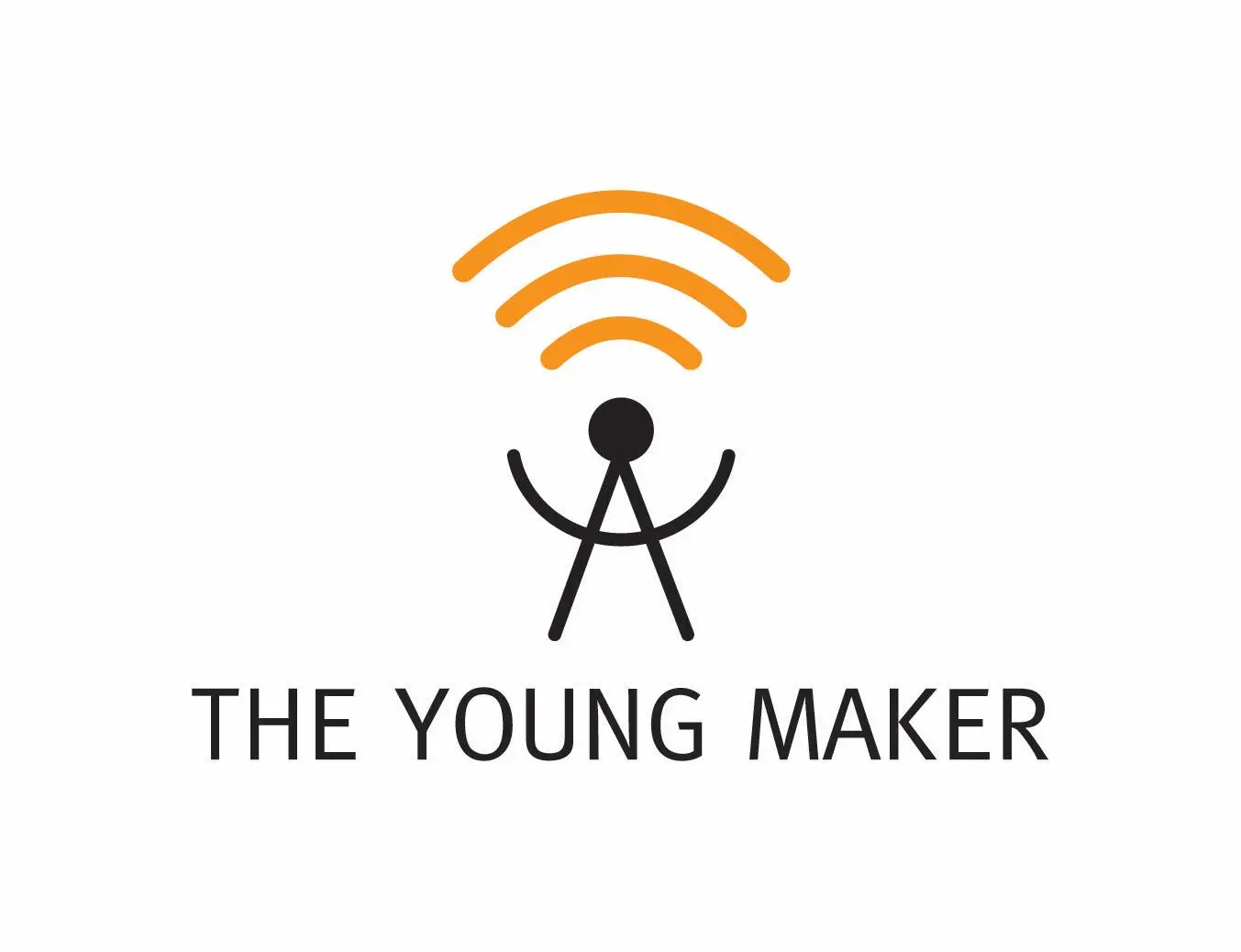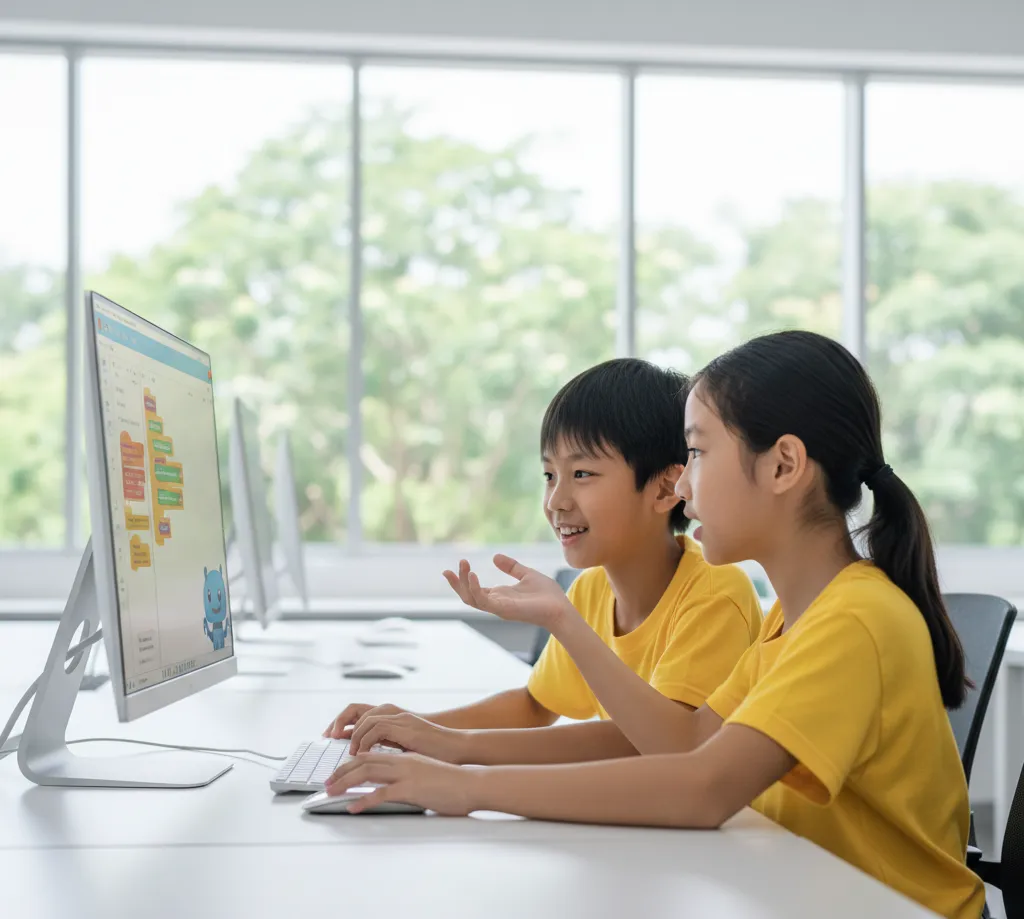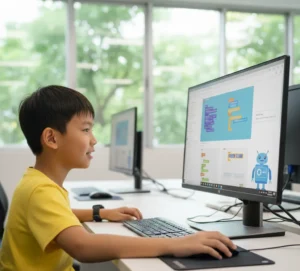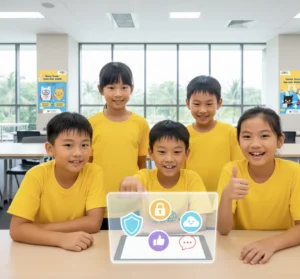When you enroll your child in a holiday program, you know they’re going to learn something new. But what if the most valuable lessons aren’t in the curriculum? While learning to code or build a robot is an fantastic outcome, the true magic of a great holiday program lies in the invisible toolkit of soft skills your child develops along the way.
These are the foundational abilities that will help them in the classroom, on the playground, and in their future careers. Let’s unpack the five key skills your child gains that go far beyond the screen.
1. Creative Problem-Solving: The Art of “Figuring It Out”
Coding and maker projects are essentially a series of puzzles. When a line of code doesn’t work or a mechanism fails, the answer isn’t in the back of a textbook. Your child learns to experiment, iterate, and view challenges from new angles.
- What it looks like: Instead of giving up, they’ll try a different command, rearrange a physical component, or brainstorm a completely new approach. This transforms them from passive consumers of technology into active, innovative problem-solvers.
2. Resilience & Grit: Where “Failure” Becomes “Feedback”
In a world that often emphasizes getting the right answer immediately, holiday programs provide a safe space for productive struggle. “Debugging” a project teaches a powerful lesson: failure is not an endpoint, but a necessary step in the learning process.
- What it looks like: A child who once might have melted down over a mistake learns to take a deep breath, analyze what went wrong, and try again. This builds a growth mindset that benefits every academic subject.
3. Collaborative Teamwork: Building Together
The best tech innovations happen in teams. Many holiday programs are built around collaborative projects, where students must communicate their ideas, delegate tasks, and combine their strengths to create something none could have built alone.
- What it looks like: Kids learn to listen to others’ ideas, negotiate roles, and give constructive feedback. They discover that the best solution often comes from the synergy of the group, a vital skill for the modern workplace. For a deeper understanding of why this matters, the Partnership for 21st Century Learning (P21) framework highlights collaboration as a core competency for student success.
4. Structured Communication: Explaining Complex Ideas
How do you explain a complex game you designed or the logic behind your code? These programs force children to organize their thoughts and articulate them clearly to peers and instructors. They learn to use specific language and logical sequences.
- What it looks like: A child gains the confidence to present their project, explain how it works, and teach a concept they’ve just mastered to someone else. This translates directly into better classroom presentations and written reports.
5. Computational Thinking: A Mindset for Every Subject
This is the big one. Beyond any programming language, children learn computational thinking—a method of problem-solving that involves breaking down complex problems (decomposition), recognizing patterns (pattern recognition), and creating step-by-step solutions (algorithms).
- What it looks like: This mindset helps them outline an essay, break down a math word problem, or plan a science experiment. It’s a way of thinking that empowers them to tackle challenges in any subject with confidence and clarity.
Ready to see these skills in action? Explore the creative and collaborative learning environment we’ve built at The Young Maker and discover how our holiday programs are designed to deliver lasting benefits.
Frequently Asked Questions (FAQ)
What if my child has no prior experience with technology or coding?
That’s perfectly fine! The best holiday programs are designed for all skill levels, especially beginners. The primary focus is on developing the problem-solving and creative thinking skills listed above, with the technology serving as a fun and engaging tool to learn those skills.
How are these “soft skills” measured or communicated to parents?
Reputable programs don’t just show you a final project. Look for providers that offer end-of-program showcases where children present their work, demonstrating their communication and problem-solving abilities. Instructors often provide informal feedback focused on a child’s resilience, collaboration, and creativity during the process.
Aren’t holiday programs just glorified childcare?
While they provide a safe and engaging environment, high-quality holiday programs are fundamentally different. They are purpose-built educational experiences with curated learning objectives designed to ignite a passion for learning and develop crucial cognitive and social skills that last long after the holiday ends.
My child is already very tech-savvy. Will they still be challenged?
Absolutely. A great program offers room for exploration and extension. Advanced students can be challenged to add more complex features to their projects, help mentor their peers (enhancing their leadership and communication skills), or tackle more open-ended challenges that require deeper thinking.





